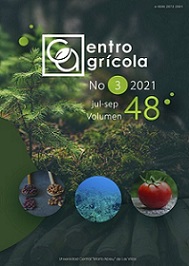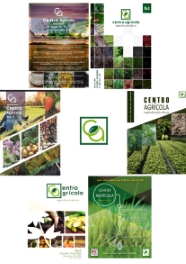CE:2717 CF: cag104172149
ARTÍCULO DE INVESTIGACIÓN
Effect of participatory selection of varieties on the identification of outstanding common bean genotypes (Phaseolus vulgaris L.)
Efecto de la selección participativa de variedades en la identificación de genotipos sobresalientes de frijol comun (Phaseolus vulgaris L.)
Alexis Lamz Piedra1, Regla María Cárdenas Travieso1, Rodobaldo Ortiz Pérez1, Yoel Hernandez Gallardo2 y Lázaro Eladio Alfonso Duque3
1Departamento de Genética y Mejoramiento de las Plantas, Instituto Nacional de Ciencias Agrícolas, Carretera a Tapaste km 3½, Gaveta Postal No. 1, San José de las Lajas, La Habana, Cuba, CP 32700
2Cooperativa de Crédito Servicios Fortalecida (CCSF) Orlando Cuellar, Carretera a Tapaste km 4½, San José de las Lajas, Mayabeque, Cuba, CP 32700
3Universidad Agraria de la Habana (UNAH), km 23½ de la Autopista Nacional, San José de las Lajas, Mayabeque, Cuba, CP 32700
E-mail: This email address is being protected from spambots. You need JavaScript enabled to view it.
ABSTRACT
Among the main factors affecting bean production is poor distribution of varieties for different environmental conditions in which its are grown. The aim of this work was to evaluate the impact of participatory selection of foreign genetic materials and national commercial and pre-commercial common bean in identifying genotypes for their outstanding performance and resistance to common bacteriosis (Xanthomonas campestris pv. phaseoli (Smith) Dye (Xcp). In the "El Mulato" farm belonging to the Empowered Cooperative of Credit and Services (CCSF) "Orlando Cuellar" in the municipality San José de las Lajas, Mayabeque, two experiments were conducted. In the first one, 15 genotypes were planted in 13 September 2014 (early season) in experimental plots to develop a diversity Fair and evaluate the natural incidence of common bean bacteriosis. In the second experiment, they were sown on 25 December (late season) the materials selected by farmers with superior agronomic performance (7 genotypes) to validate the stability of its performance. Among the results, an effective range of 93,33 % between the selected materials and selective criteria that this diversity was identified were high performance, resistance to common bacteriosis and color of beans. It was found that the selection of the diversity of beans by farmers is not influenced by the origin of materials and participatory selection identified common bean genotypes with high yield potential and stability between planting seasons.





